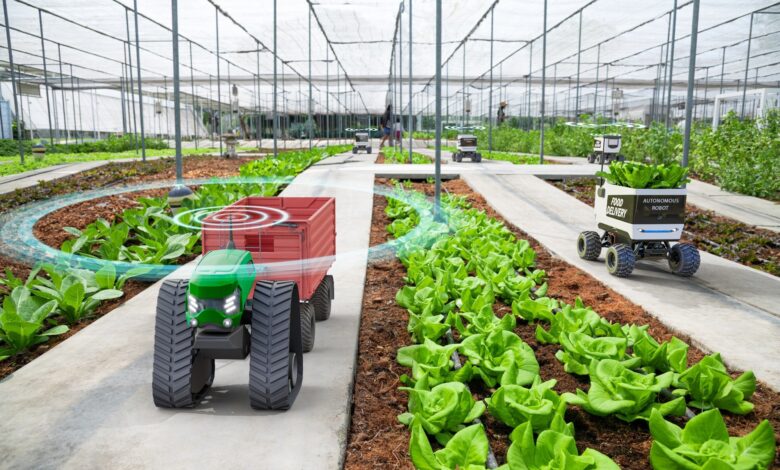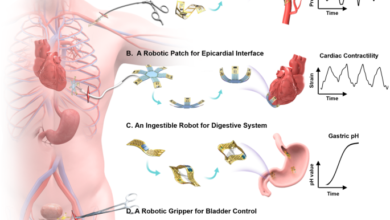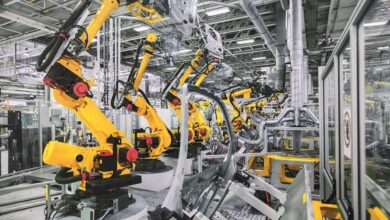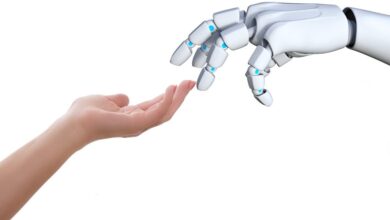Robotics Transforms Greenhouse Horticulture

In a recent article published in the journal Computers and Electronics in Agriculture, researchers from Spain explored the state of the art of robotics in greenhouse horticulture. They reviewed several existing pieces of literature to provide an overview of the current state of greenhouse robotics.
Background
Robotics has the potential to revolutionize the agricultural industry by making farming more efficient, lowering labor costs, and improving the quality of crops. This is especially true in greenhouse horticulture. Greenhouses create an ideal environment for plants to grow by controlling temperature, light, and humidity. This controlled setting allows farmers to grow crops all year-round while using less water and land compared to traditional farming.
However, managing a greenhouse requires a lot of manual work, such as planting, watering, and harvesting crops. By using robots, farmers can address labor shortages and perform repetitive tasks quickly and accurately, increasing overall productivity. For example, robots can be used to plant seeds, water plants precisely, and pick ripe fruits and vegetables without damaging them. This not only saves time but also ensures a consistent quality of the produce.
In addition, robots equipped with advanced sensors and artificial intelligence can monitor plant health and growth, detecting any issues early on. This allows farmers to take timely action, preventing crop loss and improving yield. Therefore, integrating robotics into greenhouse horticulture can significantly benefit the agricultural industry.
About the Research
In this review, the authors provided a comprehensive overview of research in the field of greenhouse robotics. They employed the preferred reporting items for systematic reviews and meta-analyses (PRISMA) guidelines updated in 2020 (PRISMA 2020) to conduct a literature review, identifying 330 publications up to 2023, with 257 included in the study. They primarily focused on identifying the features, terminology, context, applications, and scope of robots in greenhouses.
The researchers utilized a combination of filters and keywords, such as “robotics,” “robot,” and “greenhouse,” to extract information from various databases, including Scopus, ScienceDirect, Google Scholar, Web of Science, and the Institute of Electrical and Electronics Engineers (IEEE) Xplore. They developed a classification terminology and a set of criteria to categorize the technologies utilized in the reviewed articles related to greenhouse robotization and organized them into five categories based on the main objectives:
- Full robot or end-effector design: Focused on the design and development of robots and their components, including mobile platforms, manipulators, and end-effectors.
- Perception: Examined the use of sensors and algorithms for perception tasks, such as navigation, object detection, and crop monitoring.
- Control algorithms: Explored the development of control systems for robot navigation, manipulation, and task execution.
- Others: Included research on legal, economic, and social aspects of greenhouse robotics, as well as greenhouse layout design for robot integration.
Research Findings
The outcomes revealed a significant evolution in the research landscape of greenhouse robotics over the past 35 years. The authors highlighted that early research primarily focused on the design and development of new platforms and end-effectors. However, in recent years, research on control and perception gained prominence, reflecting the increasing sophistication of greenhouse robotics.
The review identified harvesting as the most frequently addressed application due to its high labor intensity and cost, requiring a large and skilled workforce, thus making it a prime target for robotization. Spraying was also crucial, as it involved exposure to harmful pesticides, posing risks to human workers. Moreover, the study emphasized the significance of sensor systems for navigation, object detection, and crop monitoring, with artificial vision being a primary focus for advancements in harvesting tasks.
In terms of research scope, the primary focus areas included the design of robot platforms, perception, and computer vision for tasks such as fruit detection and localization, as well as control algorithms for navigation, manipulation, and task execution. Additionally, some research addressed legal, economic, and layout considerations for integrating robots into greenhouse environments.
Geographically, Southeast Asia, particularly China, emerged as a leading region in greenhouse robotics research, while Europe and the Americas had a lower presence in this field. The rapid growth of research in this area was likely driven by the increasing adoption of technology in agriculture, with a focus on improving productivity, quality, and sustainability.
Conclusion
In summary, this scoping review provided a comprehensive overview of the state of the art in greenhouse robotics, highlighting the significant progress made in this field over the past few decades. Its findings could be used to effectively address key challenges in greenhouse horticulture, such as labor shortages, product quality, and worker safety. Moreover, it could serve as valuable guidance for companies and practitioners making technical and economic decisions regarding the integration of robotics in greenhouses.
Moving forward, the researchers suggested several directions to further enhance the importance of agricultural automation. They recommended improving navigation and localization techniques for robots operating in the complex greenhouse environment. Additionally, they proposed developing more advanced harvesting systems that could match or exceed human speed and dexterity. Furthermore, they advised exploring human-robot collaboration and multi-robot cooperation to enhance greenhouse operations.
Journal Reference
Sanchez-Molina, J, A., Rodriguez, F., et, el. Robotics in greenhouses. Scoping review. Computers and Electronics in Agriculture 2024 219 (108750). https://doi.org/10.1016/j.compag.2024.108750, https://www.sciencedirect.com/science/article/pii/S0168169924001418



